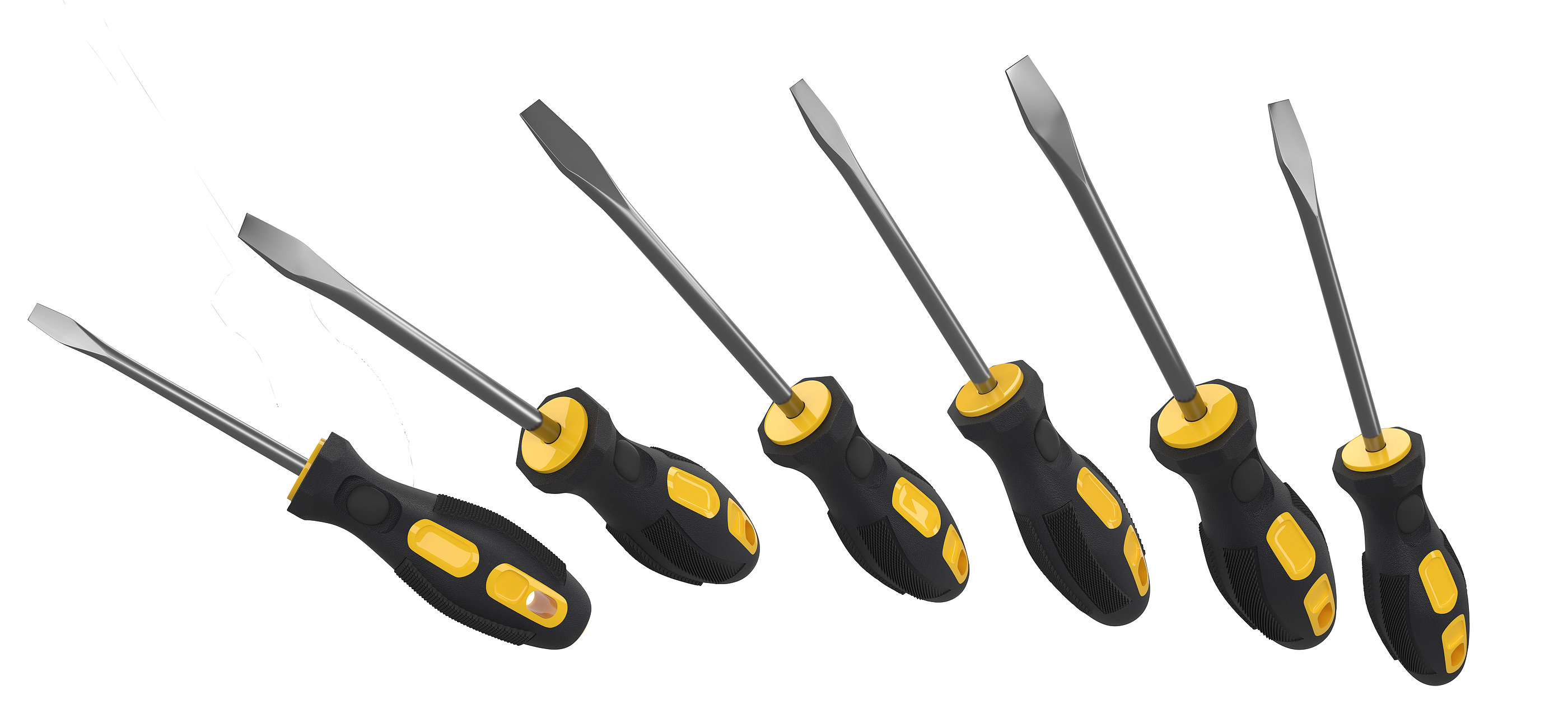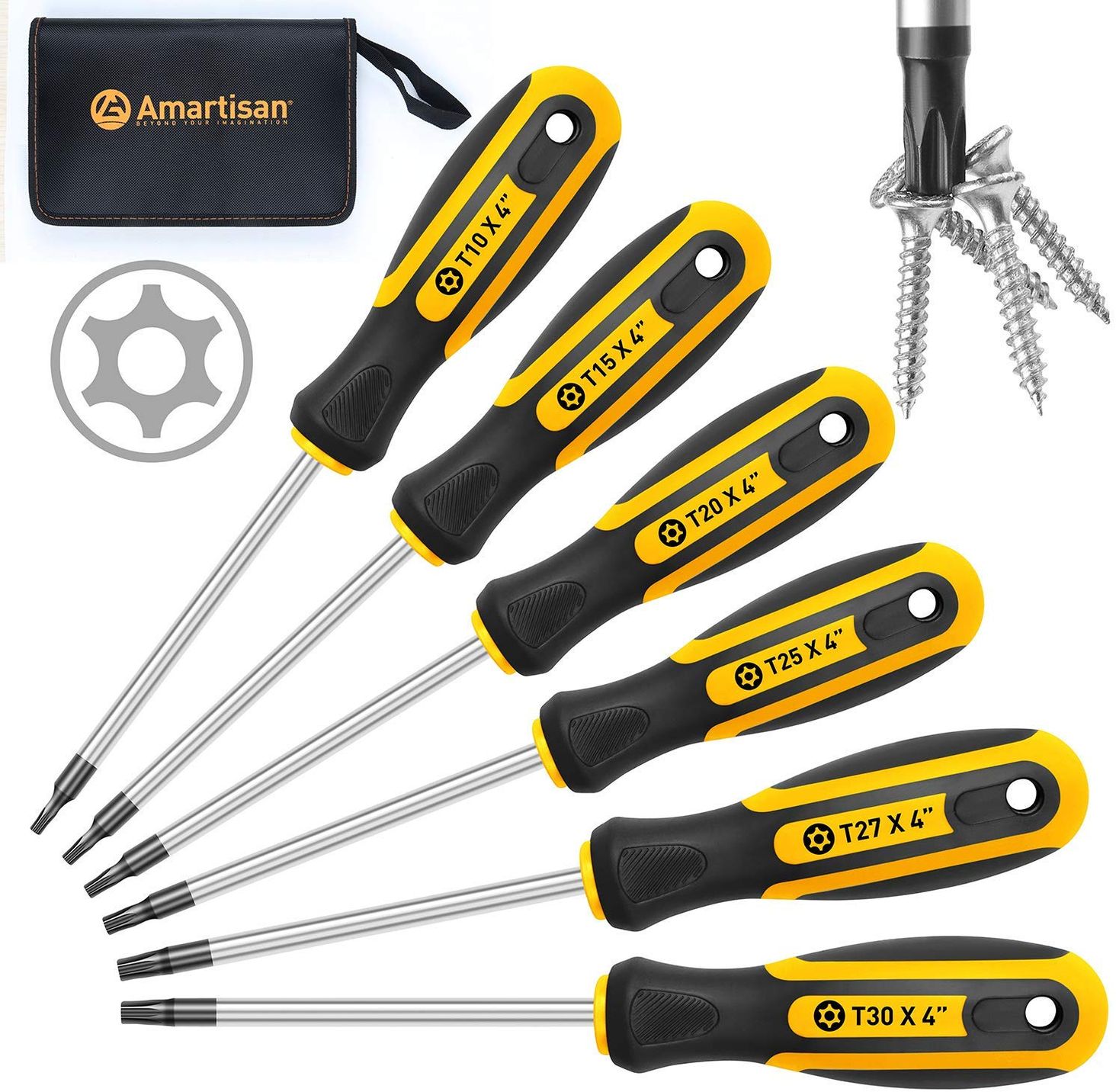Hey! Wondering how many screwdrivers you really need? Well, let’s dive right in and explore the ins and outs of this essential tool.
Now, picture this: you’re faced with a loose screw, and you reach for your trusty screwdriver. But wait! Which one should you grab? Flathead? Phillips? Torx? The options seem endless, right?
Fear not, my friend. In this guide, we’ll break it down for you and reveal the answer to that burning question: how many screwdrivers do you actually need?
So, let’s buckle up and get ready to uncover the secrets of screwdriver selection.
Are you wondering how many screwdrivers you actually need? It depends on your needs and preferences. Here’s a helpful breakdown:
- Flathead Screwdriver: Essential for slotted screws.
- Phillips Screwdriver: Needed for Phillips screws.
- Torx Screwdriver: Useful for Torx screws.
- Hex Screwdriver: Great for hexagonal screws.
- Multi-bit Screwdriver: Offers versatility with interchangeable bits.
While these five screwdrivers cover most common tasks, you can always expand your collection if needed. Remember, it’s important to have the right tool for the job!

How Many Screwdrivers Do You Need?
Whether you’re a DIY enthusiast or just need to fix everyday household items, owning a set of screwdrivers is essential. But with so many different types and sizes available, you might be wondering how many screwdrivers you actually need. In this article, we’ll explore the different types of screwdrivers, their uses, and help you determine the ideal number of screwdrivers to have in your toolbox.
The Basic Screwdriver Types
Flathead and Phillips screwdrivers are the most common types you’ll come across. A flathead screwdriver has a flat, single-slot tip, while a Phillips screwdriver has a cross-shaped tip. These two types cover the majority of screws you’ll encounter in everyday tasks. However, it’s beneficial to have a few different sizes of each to accommodate various screw sizes.
Another popular type is the Torx screwdriver, which features a star-shaped tip. Torx screws are commonly found in electronics, appliances, and automotive applications. Having a set of Torx screwdrivers in different sizes is essential if you frequently work with these types of screws.
The Benefits of Having Multiple Sizes
By having multiple sizes of screwdrivers, you ensure a more precise fit between the screwdriver tip and the screw head. This reduces the chances of slipping and damaging the screw or the surrounding material. Additionally, using the correct size of screwdriver helps prevent wear and tear on the tool itself, ensuring its longevity and effectiveness over time.
Furthermore, having multiple sizes allows you to handle a wider range of tasks. From small electronics to large furniture assembly, having a well-rounded selection of screwdrivers enables you to tackle any project that comes your way.
The Right Number of Screwdrivers
Determining the right number of screwdrivers depends on your specific needs. If you only perform occasional household tasks, having a set consisting of a few flathead screwdrivers, Phillips screwdrivers, and a couple of Torx screwdrivers should suffice. Aim for at least two different sizes of each type to cover a range of screw sizes.
On the other hand, if you frequently undertake DIY projects or work in a professional capacity, it’s advisable to invest in a comprehensive screwdriver set. This set should include a variety of sizes and types, including specialty screwdrivers such as hex, square, or Pozidriv, if needed for specific applications. A comprehensive set ensures that you’ll always have the right tool for the job, saving you time and frustration.
Maintaining Your Screwdrivers
To keep your screwdrivers in optimal condition and extend their lifespan, there are a few simple maintenance practices to follow. First, clean the tool after each use to remove any debris or substances that could damage the tip or handle. Use a soft cloth or a mild solvent if necessary.
Additionally, it’s crucial to store your screwdrivers properly to prevent damage. Consider investing in a screwdriver organizer or a toolbox with designated compartments for each tool. This will prevent them from knocking against each other or getting misplaced, ensuring they remain in good condition and readily accessible whenever you need them.
Remember to periodically inspect your screwdrivers for signs of wear or damage. If you notice any chips, cracks, or bends, it’s best to replace the screwdriver to maintain both your safety and the efficiency of your work.
The Right Screwdriver for Every Task
It’s important to note that different screwdriver types are designed for specific tasks. Here are three essential screwdriver types and their common uses:
1. Flathead Screwdriver
The flathead screwdriver, with its flat, single-slot tip, is ideal for screws with a straight, single slot on top. Flathead screws are commonly found in electrical outlets, light switch plates, and many household appliances. They are also frequently used in woodworking projects. Having a couple of different sizes of flathead screwdrivers ensures that you can handle screws of varying widths.
2. Phillips Screwdriver
The Phillips screwdriver is recognizable by its cross-shaped tip. It is designed specifically for screws with a corresponding cross-shaped slot. Phillips screws are commonly used in furniture assembly, automotive applications, and electronic devices. Like flathead screwdrivers, having a set of Phillips screwdrivers in various sizes allows you to work with screws of different dimensions.
3. Torx Screwdriver
The Torx screwdriver has a star-shaped tip and is used for screws with a corresponding star-shaped slot. Torx screws are prevalent in industries like automotive, electronics, and appliances. If you often work with these types of screws, having a set of Torx screwdrivers in different sizes is essential. It ensures that you can handle a range of Torx screw sizes without damaging the screw or losing efficiency.
Tips for Using Screwdrivers
To make the most of your screwdrivers and ensure safe and efficient work, keep the following tips in mind:
1. Select the Appropriate Size
Always choose a screwdriver that matches the size of the screw head precisely. Using the wrong size can lead to stripped or damaged screws, making them difficult to remove or causing damage to the surrounding materials.
2. Apply Steady Pressure
Maintain steady pressure when turning the screwdriver to prevent slipping. A slipping screwdriver can lead to damaged screws, injuries, or damage to the surrounding surfaces.
3. Rotate the Screwdriver in the Correct Direction
When tightening screws, turn the screwdriver clockwise. When loosening or removing screws, turn the screwdriver counterclockwise. This prevents unnecessary stress on the screw and ensures an easier and safer operation.
In conclusion, having a well-rounded collection of screwdrivers is essential for any DIY enthusiast or homeowner. Aim for a set that includes flathead, Phillips, and Torx screwdrivers in various sizes to cover a wide range of tasks. By maintaining and storing your screwdrivers properly, you can ensure their longevity and effectiveness. Remember to select the appropriate screwdriver size, apply steady pressure, and rotate the screwdriver in the correct direction for safe and efficient use. With the right number and types of screwdrivers at your disposal, you’ll be well-equipped to tackle any project that comes your way.
Key Takeaways: How Many Screwdrivers Do You Need?
– It’s helpful to have at least three types of screwdrivers: a flathead, a Phillips head, and a square head.
– Different screwdrivers are used for different types of screws.
– It’s important to have the right size screwdriver for the job to avoid damaging the screw or the tool.
– Having multiple screwdrivers allows you to work more efficiently on various projects.
– Investing in a quality set of screwdrivers can save you time and frustration in the long run.
Frequently Asked Questions
When it comes to screwdrivers, we often wonder how many we actually need. To help clear up the confusion, here are some commonly asked questions and their answers:
1. What types of screwdrivers should I have in my toolkit?
Having a versatile toolkit is essential, and when it comes to screwdrivers, a good starting point is to have at least three different types: a flathead screwdriver, a Phillips-head screwdriver, and a Torx screwdriver. These three types will cover the majority of screws you’ll encounter in everyday household tasks.
However, it’s worth considering adding more specialized screwdrivers to your collection if you frequently work on electronics, small appliances, or automotive projects. Look into getting precision screwdrivers for delicate tasks or specific screw heads you encounter often.
2. Why do I need more than one type of screwdriver?
Each type of screw head requires a different tool to remove or tighten it properly. Using the wrong type of screwdriver can damage the screw head, make the task more difficult, and even cause accidents. By having multiple types of screwdrivers, you ensure that you’ll always have the right tool for the job.
Even within the same type of screw head, there might be different sizes available. The size of the screwdriver should match the size of the screw head to prevent stripping and provide optimal leverage. Therefore, it’s important to have several sizes of each type of screwdriver in your toolkit.
3. Can I get away with using a multi-bit screwdriver instead?
A multi-bit screwdriver can be a convenient option, especially if you have limited storage space or you need to carry tools on the go. These screwdrivers usually come with interchangeable bits that allow you to switch between different types and sizes of screw heads.
While a multi-bit screwdriver can be a versatile tool, it’s important to note that they may not provide the same level of precision and torque as dedicated screwdrivers. For delicate tasks or heavy-duty jobs, it’s recommended to use individual screwdrivers that are designed specifically for the task at hand.
4. How do I know which size of screwdriver to use?
To determine the correct size of screwdriver, you need to match it with the size of the screw head. Most screws have the size indicated on the head itself, usually in the form of a numbered measurement or a letter code.
If the screw head does not have any markings, you can try different screwdrivers until you find one that fits snugly without wobbling or slipping. It’s important to use a screwdriver that matches the size of the screw head to avoid damaging it or the surrounding material.
5. Can I use a power drill instead of a screwdriver?
Power drills can certainly make quick work of screwing tasks, but they may not always be suitable. It’s important to consider the material you’re working with and the depth of the screw hole. In some cases, using a power drill may cause the screw to go in too deep or damage the material.
If you’re unsure whether to use a power drill or a screwdriver, it’s always a good idea to start with a screwdriver and switch to a power drill if necessary. This allows for more control and precision, especially when dealing with delicate materials or screws requiring minimal force.

The 101 On Screwdrivers
Summary
You don’t need a lot of screwdrivers, just a few different types will do the trick. A Phillips screwdriver is great for cross-shaped screws, while a flathead screwdriver is perfect for straight slots. And if you want to tackle smaller screws, a precision screwdriver set is handy. Overall, having a small collection of different screwdrivers will cover most of your needs around the house or when fixing things.
But remember, it’s important to use the right screwdriver for the job to avoid damaging screws or hurting yourself. So, keep these few essential screwdrivers in your toolbox, and you’ll be ready to handle most screw-related tasks that come your way.
